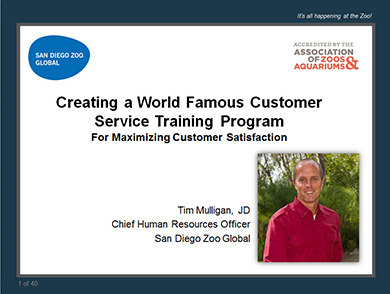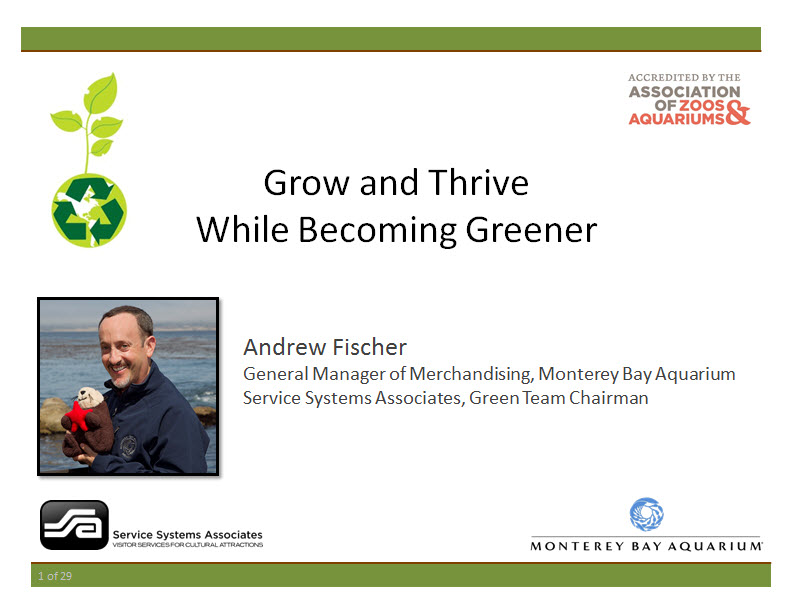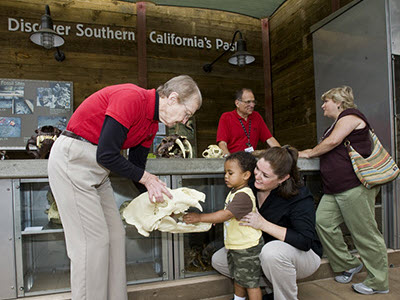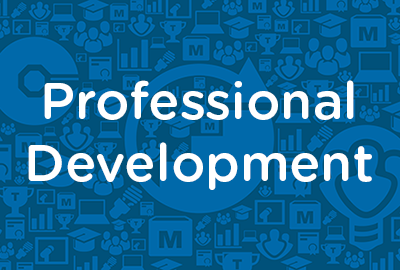 |
STEM and You |
1.00 |
As early childhood professionals, we’ve all heard the term STEM. It stands for Science, Technology, Engineering, and Mathematics. But do you think you would recognize STEM in action if you saw it? Let’s find out!
Course Learning Objectives:
- Define STEM in the context of early childhood education.
- Recognize the impact of a teacher’s attitude toward STEM on their instructional practice. |
 |
Cultural Competency for Children and Families (CDA 4) |
2.00 |
As classrooms and communities reflect our increasingly interconnected world, cultural understanding becomes essential for educators. This course equips you with the knowledge and tools to navigate the spectrum of cultural awareness, sensitivity, responsiveness, and competence. Together, we'll explore impactful practices for fostering inclusive environments and culturally competent approaches that empower children and families. |
 |
Stress First Aid for Long-Term Care Staff |
1.00 |
As an essential worker during a pandemic, your work stress is accompanied by the stressors in your personal life, as well as concerns about your family’s health. As staff in a long-term care facility, you also have the stress of caring for vulnerable individuals with serious medical and cognitive issues who may be reacting poorly to extended social isolation. This is unprecedented in long-term care, and it requires ongoing, effective stress management. Stress First Aid offers a flexible framework of tools for addressing stress reactions that can hopefully reduce the likelihood that these reactions will develop into more severe or long-term problems. |
 |
Coaching: Interpersonal Meetings |
0.75 |
As a coach, your communication skills are critical to your success and the employees you are coaching. In many office environments, it can be tempting to get through the day without much personal contact by relying on technology. However, nothing can replace the benefits of personal interaction, or face-to-face communication. |
 |
Coaching: Interpersonal Meetings (Instructor Guide) |
0.75 |
As a coach, your communication skills are critical to your success and the employees you are coaching. In many office environments, it can be tempting to get through the day without much personal contact by relying on technology. However, nothing can replace the benefits of personal interaction, or face-to-face communication.
This Instructor's Edition of this course includes notes and suggestions to assist you in presenting the material, whether in an in-person classroom setting or as an instructor-led online or distance-learning course. It also provides you with the answers to questions found in mid-lesson activities, as well as in the quiz that concludes the course. |
 |
Creating a World Famous Customer Service Training Program |
1.00 |
Are you interested in putting together a unique, world class, and cost effective Customer Service Training Program, rather than just purchasing one "off the shelf?" This webinar will walk you through the steps taken by San Diego Zoo Global to create its GRRREAT! Customer Service Training Program - all done in house! |
 |
Introducing Monotremes |
3.00 |
Are monotremes a bit of mystery to you? Get to know the echidnas and the platypus, as Monotremes 1 explores the physical characteristics, distribution, and habitats of echidnas and platypuses. In Monotremes 2, learners investigate what—and how—monotremes eat, as well as which animals prey on them, and how they avoid being eaten. This module also covers thermoregulation, locomotion, behavior, and social structure. The third and final course in the series, Monotremes 3, explores the fascinating world of monotreme reproduction and investigates the conservation status of monotremes, threats to platypus and echidna species, and how conservationists are helping. The module concludes with a look at some examples of how we can all participate in conservation. Remarkable images show platypuses and echidnas in ways you’ve never seen before, and video provides insights into their behavior. Interactivity sprinkled throughout the modules engages participants in the learning process, and questions at the end of each section ensure that they have mastered fundamental concepts before they move on. |
 |
Pensamiento Crítico y la Toma de Decision (Spanish) Critical Thinking and Decision-Making |
1.00 |
Aprenda estrategias para resolver problemas cotidianos y tomar decisiones reflexivas y bien informadas.
Learn strategies for solving everyday problems and making thoughtful, well-informed decisions. |
 |
Trauma and Its Impact on Education |
1.50 |
Any professional employed in a school must understand the adverse experiences that students have can directly impact their experience in the classroom. This course dives into the definition of trauma, the impact of trauma on the brain, and how trauma can manifest in the classroom. It is important to know how to help students who have experienced trauma in their lives. This course will also touch on the importance of self-care for professionals who work with students who have experienced trauma. This course will help you develop new knowledge about students and help you understand your role as an educational professional.
Trauma and Its Impact on Education is the first course in a series of two trauma courses. After this course, be sure to check out Trauma-Informed Practices. |
 |
Customer Service: Greeting Customers |
1.00 |
Answering the phone when you know that you might be on the wrong end of a verbal confrontation is difficult, but it’s the first step in dealing with customer service issues. How you answer the phone will set a tone with the customer on the other end. Greeting a customer requires much more than a simple “Hello, how can I help you?” |
 |
The Fundamentals of Animal Learning Webinar |
1.00 |
Animals, whether you are working with your pet at home or a 300 pound lion, are constantly learning about their environment. Animal care workers and animal trainers can use this behavioral knowledge to their advantage in animal management.
Discover the importance of detailed observation of animal behaviors. Understanding reflexes and situations where reflexive behaviors are likely to occur will enable animal keepers to work safely in a potentially dangerous environment.
Students will also discover a technology to reduce the stresses associated with daily animal management, improving animal welfare
|
 |
Animal Behavior 1: Why Study Animal Behavior? |
1.00 |
Animal behavior is a topic that has fascinated people for centuries. The first course in the series will give an overview of behavior and highlight the many reasons to study animal behavior, the history of behavioral research, and the many different fields that study animal behavior. |
 |
Anger Management |
1.00 |
Anger is a set of physical responses, emotions, and behaviors triggered by a perceived threat or frustration. Anger can be harmful or helpful, depending on how you cope with your anger and the anger of others. This course will explore how to understand your anger better and manage your anger responses. You'll also examine the causes of anger and ways to use it constructively. |
 |
Grow and Thrive while Becoming Greener |
1.00 |
Andrew Fischer, Retail General Manager of the world renowned Monterey Bay Aquarium and Green Team Chairman for Service Systems Associates (SSA) will be presenting information about his company’s successful eco-efforts and how your organization can also grow and thrive while becoming greener. He will also review some of the challenges and opportunities that his company has dealt with over the years – and the many success stories his team has been inspired to pursue. Topics in this course will include:
- Partnering with your client or vendor to build a green team
- Learning green practices from others
- Establishing eco-friendly standards
- Communicating with your green team and locations
- Project programs – examples of successes and challenges
- Green financial vision
Andrew, as a representative of Service Systems Associates can provide additional information and resources for you to build a greener and healthier business |
 |
San Diego Zoo - Interpretation Basics: Module 1 |
2.50 |
An understanding of interpretation techniques is increasingly important for professionals and volunteers in zoos, aquariums, museums, and a variety of other tourism and hospitality organizations. This course will introduce the basics of interpretation, including the origins of interpretation, Tilden’s Six Principles of Interpretation, connecting tangibles with intangibles, and understanding visitors’ needs and motivations. |
 |
Managerial Leadership: Making Vision a Reality |
1.00 |
An organization’s vision must be communicated in a manner that inspires people to participate in fulfilling it. Before members of an organization work to their full potential, they must first understand what it is they are working for—to make the organization’s vision a reality.
It is through communication that a leader gains support for the organization’s vision. People will not commit to something blindly, nor should they be expected to commit without information. Therefore, when, how, and to whom an organization’s vision is communicated is of great importance to the successful fulfillment of the vision.
Your organization’s vision must be communicated to the people who’ll have a hand in fulfilling it, as well as to the people who’ll be affected by it, such as clients or investors. Your organization’s vision should also be communicated to potential employees, or other people in the community who come into contact with your organization.
In this course you will learn to: communicate the vision, gain support for the vision, and empower employees, and implement the organization’s vision. |
 |
Managerial Leadership: Making Vision a Reality (Instructor Guide) |
1.00 |
An organization’s vision must be communicated in a manner that inspires people to participate in fulfilling it. Before members of an organization work to their full potential, they must first understand what it is they are working for—to make the organization’s vision a reality.
It is through communication that a leader gains support for the organization’s vision. People will not commit to something blindly, nor should they be expected to commit without information. Therefore, when, how, and to whom an organization’s vision is communicated is of great importance to the successful fulfillment of the vision.
Your organization’s vision must be communicated to the people who’ll have a hand in fulfilling it, as well as to the people who’ll be affected by it, such as clients or investors. Your organization’s vision should also be communicated to potential employees, or other people in the community who come into contact with your organization.
In this course you will learn to: communicate the vision, gain support for the vision, and empower employees, and implement the organization’s vision.
This Instructor's Edition of this course includes notes and suggestions to assist you in presenting the material, whether in an in-person classroom setting or as an instructor-led online or distance-learning course. It also provides you with the answers to questions found in mid-lesson activities, as well as in the quiz that concludes the course. |
 |
Advanced Interpersonal Communication: Organizational Culture |
1.34 |
An organizational culture is the personality of an organization. This personality is both determined and accepted by the organization’s members. For example, an organization might have a culture that is youthful, energetic, and fast-paced. In this type of culture, decisions are made quickly, and employees are empowered to take action in a wide variety of situations. Another organization might be more straight-laced and policy-oriented. This organization would be much more formal and serious in the way it does business. It is important to recognize and understand the culture of an organization, so that you can determine your fit with the organization.
In this course you will learn: to determine the nature of an organization’s culture, to use the cultural network to your advantage, and identify the characteristics of the roles exhibited in the network, to identify the elements of physical culture that affect interpersonal communication, and to identify the ways in which managers can build a positive culture. |
 |
Advanced Interpersonal Communication: Organizational Culture (Instructor Guide) |
1.34 |
An organizational culture is the personality of an organization. This personality is both determined and accepted by the organization’s members. For example, an organization might have a culture that is youthful, energetic, and fast-paced. In this type of culture, decisions are made quickly, and employees are empowered to take action in a wide variety of situations. Another organization might be more straight-laced and policy-oriented. This organization would be much more formal and serious in the way it does business. It is important to recognize and understand the culture of an organization, so that you can determine your fit with the organization.
In this course you will learn: to determine the nature of an organization’s culture, to use the cultural network to your advantage, and identify the characteristics of the roles exhibited in the network, to identify the elements of physical culture that affect interpersonal communication, and to identify the ways in which managers can build a positive culture.
This Instructor's Edition of this course includes notes and suggestions to assist you in presenting the material, whether in an in-person classroom setting or as an instructor-led online or distance-learning course. It also provides you with the answers to questions found in mid-lesson activities, as well as in the quiz that concludes the course. |
 |
Managerial Leadership: Leading with a Vision (Instructor Guide) |
1.50 |
An organization does not generate itself—it is founded by one or more people who take the initiative to put an idea into action. Leadership is the cement that unites members of an organization to achieve a common end.
Leadership helps members of an organization understand the organization’s purpose, and makes sure they do not lose sight of the organization’s vision. If an organization functions ineffectively, leadership helps members cope with the changes needed to improve the organization, enabling fulfillment of the vision or goals.
Leadership also helps members of an organization work to their full potential. If a team has the ability and resources to complete a task, leadership can provide the motivation and inspiration the team needs to complete the task.
In this course you will learn to: Identify a leader, define the vision of an organization and write a vision statement, and relate goals to the vision statement.
This Instructor's Edition of this course includes notes and suggestions to assist you in presenting the material, whether in an in-person classroom setting or as an instructor-led online or distance-learning course. It also provides you with the answers to questions found in mid-lesson activities, as well as in the quiz that concludes the course. |
 |
Managerial Leadership: Leading with a Vision |
1.50 |
An organization does not generate itself—it is founded by one or more people who take the initiative to put an idea into action. Leadership is the cement that unites members of an organization to achieve a common end.
Leadership helps members of an organization understand the organization’s purpose, and makes sure they do not lose sight of the organization’s vision. If an organization functions ineffectively, leadership helps members cope with the changes needed to improve the organization, enabling fulfillment of the vision or goals.
Leadership also helps members of an organization work to their full potential. If a team has the ability and resources to complete a task, leadership can provide the motivation and inspiration the team needs to complete the task.
In this course you will learn to: Identify a leader, define the vision of an organization and write a vision statement, and relate goals to the vision statement. |
 |
Budgeting: Operating Budgets |
1.00 |
An operating budget is a projection of the entire income statement of a company, or department. Operating budgets manage the operations of a company or department. They include the expenses associated with manufacturing, selling, and distributing products. Operating budgets also help to administer the daily functioning of the company. They project the expenses a company will incur in its manufacturing facilities, as well as the revenue that it will generate. |
 |
Interviewing Skills: Fundamentals Of Interviews |
1.00 |
An interview is a planned, focused conversation that provides an employer with information needed to evaluate a candidate’s ability and motivation to perform a job successfully. In addition, interviews enable you to analyze an individual’s potential fit with an organization. To select the right candidate, you need to have a range of interviewing skills.
In this course you will learn to: discuss the benefits of interviewing skills and identify the various types of interviews, and define the success factors for a position and identify the steps involved in writing and finalizing those success factors. |
 |
Interviewing Skills: Fundamentals Of Interviews (Instructor Guide) |
1.00 |
An interview is a planned, focused conversation that provides an employer with information needed to evaluate a candidate’s ability and motivation to perform a job successfully. In addition, interviews enable you to analyze an individual’s potential fit with an organization. To select the right candidate, you need to have a range of interviewing skills.
In this course you will learn to: discuss the benefits of interviewing skills and identify the various types of interviews, and define the success factors for a position and identify the steps involved in writing and finalizing those success factors.
This Instructor's Edition of this course includes notes and suggestions to assist you in presenting the material, whether in an in-person classroom setting, or as an instructor-led online or distance-learning course. It also provides you with the answers to questions found in mid-lesson activities, as well as in the quiz that concludes the course. |
 |
Infectious Diseases in Early Childhood (CDA 1) |
3.00 |
An infectious disease is an illness that is caused by organisms such as bacteria, viruses, fungi, and parasites. Many of these organisms live in or on our bodies, and are normally harmless. But under certain circumstances, they can cause disease. This course is also designed to be part of a Child Development Associate (CDA) Credential™ curriculum. It covers Subject Area 1: Planning a Safe, Healthy Environment to Invite Learning. |


























